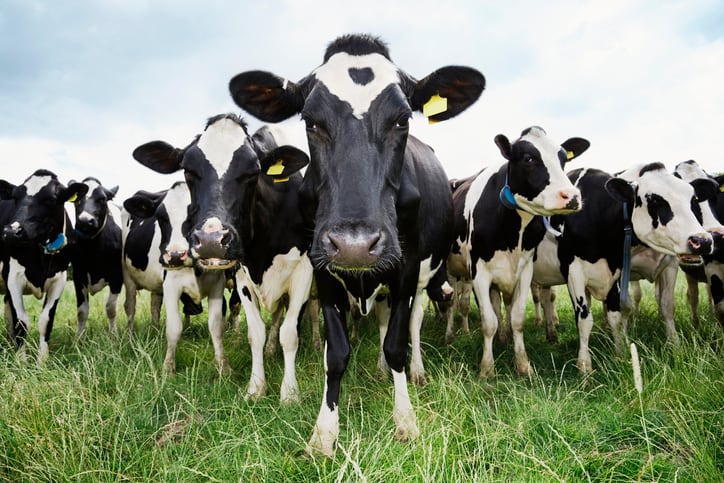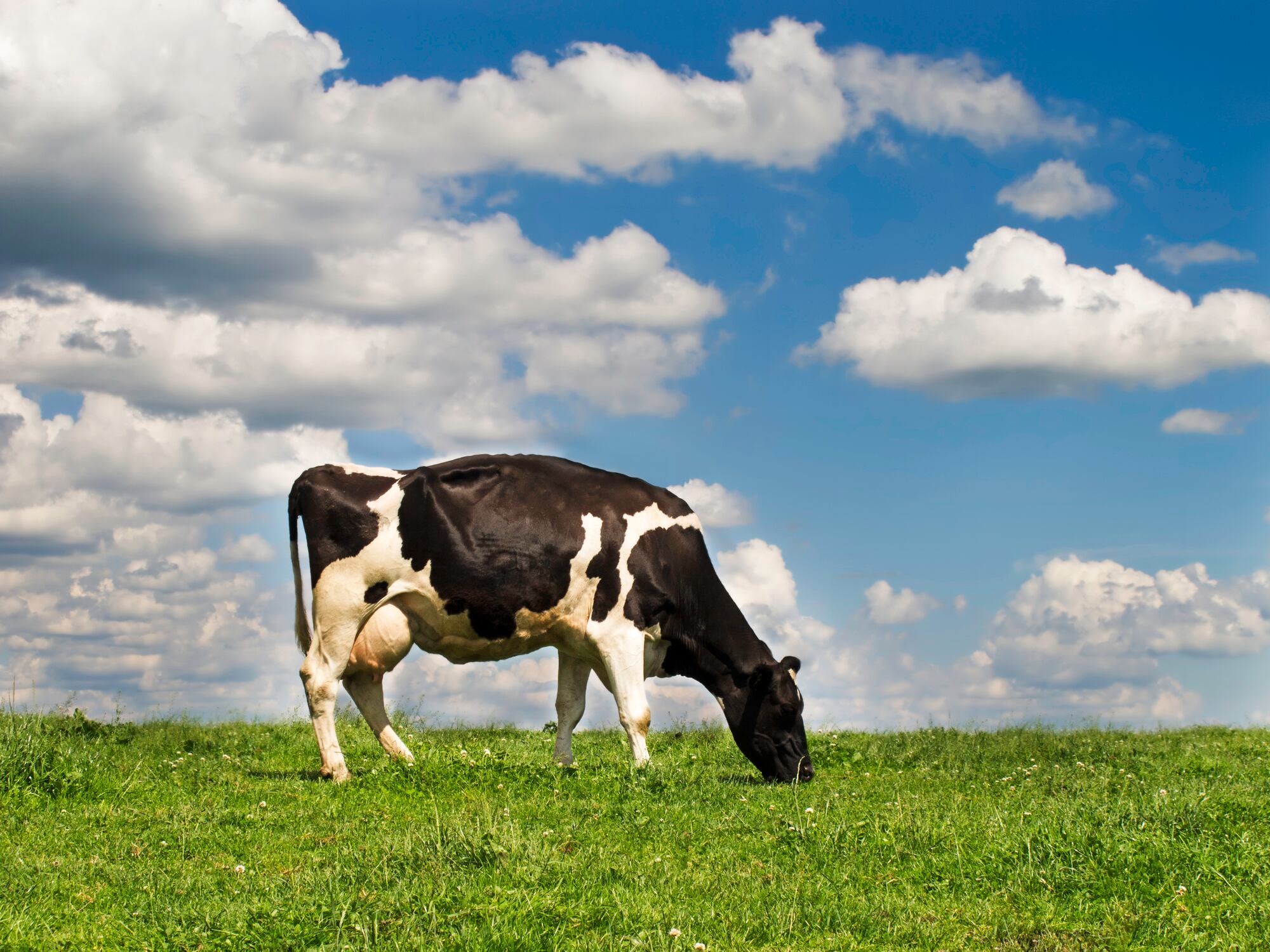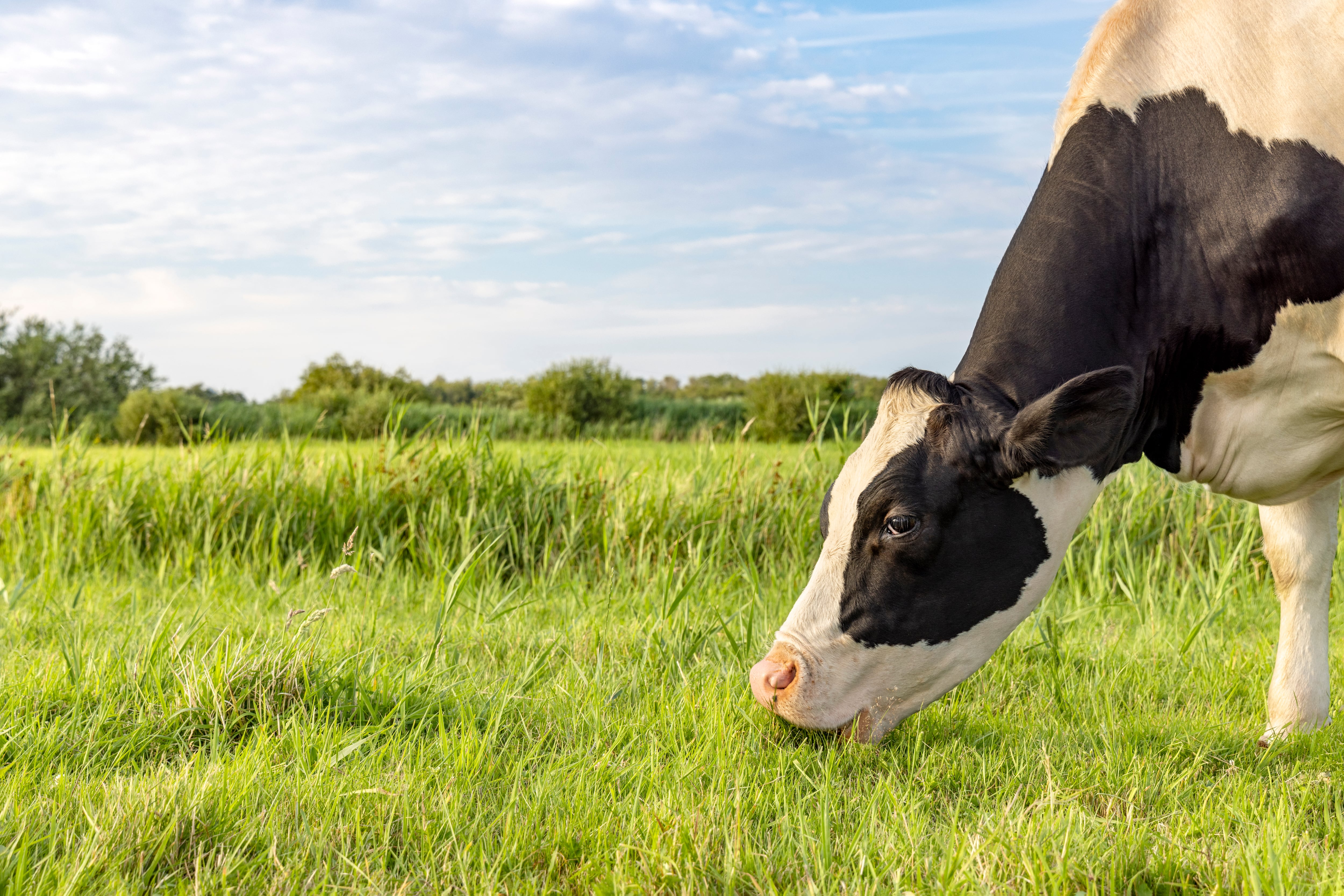Danone North America, Ahold Delhaize USA and The Nature Conservancy are moving forward with plans to reduce livestock methane emissions, despite global setbacks in the dairy industry’s pursuit of greater environmental sustainability.
The purpose-driven food and beverage company, grocery retail group and environmental conservation organization launched a pilot program in mid-September that targets livestock methane emissions – 90% of which come from cows burping – over the next five years from the dairy supply in select Danone North America yogurt products, including those sold by Ahold Delhaize brands.
Ahold Delhaize USA, a division of global food retailer Ahold Delhaize, owns the largest grocery retail group on the East Coast, operating five banners – Food Lion, Giant Food, The GIANT Company, Hannaford and Stop & Shop.
Emissions best practices
The Nature Conservancy’s role is to assist dairy producers in deploying sustainable farming practices to reduce methane emissions. Those include manure separation, compost turners, manure spreaders and other tools used for more efficient irrigation, according to a joint press release.
The global environmental organization will also provide resources from its NatureVest sustainable finance team to help agrifood companies leverage market mechanisms to implement sustainability practices throughout the supply chain, the group said.
Jessie Copeland, head of Regenerative Agriculture at Danone North America said the project aims to “bring health through food to as many people as possible.”
“We strive to work hand-in-hand with our farm partners to implement resilient and regenerative practices that benefit farms, climate, local communities and our business. But we can’t do it alone,” Copeland said.
The program is part of the dairy manufacturer’s Danone Impact Journey, a three-pronged project that has set the goals of strengthening health, nature and people/communities.
It takes a coalition
The news was lauded by the Environmental Defense Fund (EDF) and its Dairy Methane Action Alliance (DMAA), a consortium of 10 food manufacturing and retail companies that includes Danone, General Mills, Starbucks and Kraft Heinz, among others.
Danone, a founding member of the DMAA, has been working on methane reduction since 2023, when the company announced plans to reduce dairy emissions from its fresh milk supply by 30% by 2030.
“A reduction in methane emissions will have immediate benefits for the climate that reductions in carbon dioxide cannot achieve on their own, according to the Intergovernmental Panel on Climate Change,” Danone said in 2023. “Dairy production from cattle makes up an estimated 8% of total human-caused methane emissions, as part of agriculture and livestock activities which represent approximately 40% of global methane emissions.”
Katie Anderson, EDF senior director, Business, Food and Forests, who leads the organization’s work in methane reduction, said the pilot project is important because methane emissions contribute significantly to global warming.
“Methane matters because it’s short lived and it’s highly potent, which means that if we can turn down the dial on methane today, it puts us on the best possible trajectory to a stable climate in the future,” she said.
The partnership between retailers and farmers is crucial because of the complex nature of the supply chain, she added.
“The farmer is where the emission is happening, but a farmer can’t reduce that emission on their own. They are often small businesses, family-owned farms, and so we really need the value chain to align around the types of emissions reductions that we need,” she said.
The movement in reducing methane emissions is still in its infancy, according to an EDF report published in 2022 that showed a low awareness of the climate opportunities around methane reduction, a lack of financial incentives to fix the problem and insufficient innovation in solutions.
Industry takes the lead
Economic and political headwinds make industry involvement in the methane reduction effort more important than ever, according to Anderson.
Cuts in aid spending across the globe, limited climate finance and fragmented funding mechanisms for methane reduction are barriers to methane reduction, explained Donald Moore, executive director of the Global Dairy Platform (GDP).
The industry is making progress, though, Anderson said.
“We have seven companies that are now reporting their methane emissions transparently as part of their alliance milestones,” she said, adding that four of those have created a Dairy Methane Action Plan as a roadmap for strategically reducing emissions. “And we’re continuing to work on driving collaboration between these different companies who are all different sizes, all different parts of the supply chain, to try to deliver more impact together and break down common barriers. And I think that’s really important right now.”
Despite the complicated moment for the environmental movement, the food and ag sector knows its reliance on stable weather patterns, she said.
“This is core business for these companies – dairy cows are impacted by drought, flooding, heat – and all of that can impact productivity,” she said. “And so this isn’t about do-gooderism, right? This is about, how do I maintain the stability of my supply chain and be able to continue to procure from these areas?”



